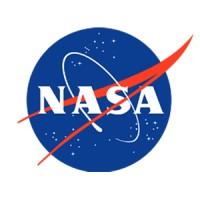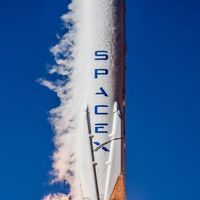The Starliner Saga: Boeing's Journey Back to Earth
September 1, 2024, 3:38 am

Location: United States, Illinois, Chicago
Employees: 10001+
Founded date: 1916
Total raised: $25.01B

Location: United States, Maryland, Greenbelt
Employees: 10001+
Founded date: 1958
Total raised: $25.7B

Location: United States, District of Columbia, Washington
Employees: 5001-10000
Founded date: 2002
Total raised: $7.53B
The cosmos is a vast ocean. In this ocean, the Starliner, a spacecraft from Boeing, is set to make its return to Earth. On September 6, 2024, it will detach from the International Space Station (ISS) and glide back home. But this journey is not just about the spacecraft; it’s a chapter in a larger story of partnership, challenges, and the relentless pursuit of progress.
NASA has announced the return of the Starliner. It will embark on its journey at 6:04 PM Eastern Time. If the stars align—meaning favorable weather and no technical hiccups—it will land in New Mexico six hours later. The landing will be a ballet of precision, with parachutes unfurling to cushion its descent.
This mission is unique. There will be no astronauts aboard. Instead, the Starliner will operate autonomously, under the watchful eyes of flight controllers in Houston and Florida. These controllers are the unseen hands guiding the ship, ready to take control if needed. It’s a testament to the advancements in technology and the trust placed in automated systems.
Meanwhile, astronauts Sunita Williams and Butch Wilmore will remain on the ISS until February 2025. Their return will be aboard a SpaceX Dragon, which is scheduled to launch next month. This decision underscores a cautious approach. NASA has opted not to use the Starliner for their return due to potential risks. Safety is paramount in space travel, and every decision is weighed like gold.
The partnership between NASA and Boeing is complex. Despite the challenges faced with the Starliner, NASA remains committed to working with Boeing on crewed missions. The agency needs two different spacecraft to ferry astronauts to the ISS. This strategy is a safety net, ensuring redundancy in their operations. The contracts with Boeing are structured to mitigate risks, with fixed payments that require approval for any overruns. This is a dance of accountability and trust.
Boeing has a long history with NASA. Their collaboration stretches back decades, encompassing various projects, including the Space Launch System (SLS). The SLS is a titan, the most powerful rocket in operation, which successfully launched NASA’s Orion spacecraft on a lunar mission in late 2022. This legacy adds weight to their current partnership, despite the turbulence surrounding the Starliner.
In a twist of fate, NASA has made adjustments to the upcoming SpaceX Crew-9 mission. Two astronauts, originally slated to fly, have been replaced to accommodate the return of the Starliner crew. Nick Hague and Alexander Gorbunov will now be the sole occupants of the Crew Dragon for this mission. The decision was not made lightly. It reflects the intricate balance of experience and collaboration with international partners like Roscosmos.
The Crew-9 mission is set to launch no earlier than September 24, 2024. The timeline is tight, and the stakes are high. The original crew of four has been trimmed to two, a move that speaks to the fluid nature of space missions. NASA’s astronaut office, led by Joe Akaba, made this call, emphasizing the need for a cohesive team. The astronauts had trained together, but the mission’s success hinges on adaptability.
As the Starliner prepares for its return, it symbolizes more than just a spacecraft. It represents the spirit of exploration and the resilience of partnerships. Each launch, each return, is a step forward in humanity’s quest to understand the universe. The challenges faced by Boeing and NASA are not just obstacles; they are lessons etched in the fabric of space exploration.
The upcoming return of the Starliner is a moment of reflection. It’s a reminder of the complexities of space travel. Each mission is a thread in a larger tapestry, woven with ambition, innovation, and sometimes, setbacks. The journey of the Starliner is a microcosm of the broader narrative of human exploration.
As we look to the stars, we must remember that every return is a new beginning. The Starliner’s descent will be watched closely, not just for its success, but for what it represents. It’s a beacon of hope, a testament to perseverance, and a reminder that in the vast ocean of space, we are all explorers.
In the end, the cosmos is not just a destination; it’s a journey. The Starliner’s return is a chapter in that journey, a story of resilience, collaboration, and the unyielding human spirit. As we prepare for its landing, we are reminded that every mission is a step closer to the stars. The future is bright, and the journey continues.
NASA has announced the return of the Starliner. It will embark on its journey at 6:04 PM Eastern Time. If the stars align—meaning favorable weather and no technical hiccups—it will land in New Mexico six hours later. The landing will be a ballet of precision, with parachutes unfurling to cushion its descent.
This mission is unique. There will be no astronauts aboard. Instead, the Starliner will operate autonomously, under the watchful eyes of flight controllers in Houston and Florida. These controllers are the unseen hands guiding the ship, ready to take control if needed. It’s a testament to the advancements in technology and the trust placed in automated systems.
Meanwhile, astronauts Sunita Williams and Butch Wilmore will remain on the ISS until February 2025. Their return will be aboard a SpaceX Dragon, which is scheduled to launch next month. This decision underscores a cautious approach. NASA has opted not to use the Starliner for their return due to potential risks. Safety is paramount in space travel, and every decision is weighed like gold.
The partnership between NASA and Boeing is complex. Despite the challenges faced with the Starliner, NASA remains committed to working with Boeing on crewed missions. The agency needs two different spacecraft to ferry astronauts to the ISS. This strategy is a safety net, ensuring redundancy in their operations. The contracts with Boeing are structured to mitigate risks, with fixed payments that require approval for any overruns. This is a dance of accountability and trust.
Boeing has a long history with NASA. Their collaboration stretches back decades, encompassing various projects, including the Space Launch System (SLS). The SLS is a titan, the most powerful rocket in operation, which successfully launched NASA’s Orion spacecraft on a lunar mission in late 2022. This legacy adds weight to their current partnership, despite the turbulence surrounding the Starliner.
In a twist of fate, NASA has made adjustments to the upcoming SpaceX Crew-9 mission. Two astronauts, originally slated to fly, have been replaced to accommodate the return of the Starliner crew. Nick Hague and Alexander Gorbunov will now be the sole occupants of the Crew Dragon for this mission. The decision was not made lightly. It reflects the intricate balance of experience and collaboration with international partners like Roscosmos.
The Crew-9 mission is set to launch no earlier than September 24, 2024. The timeline is tight, and the stakes are high. The original crew of four has been trimmed to two, a move that speaks to the fluid nature of space missions. NASA’s astronaut office, led by Joe Akaba, made this call, emphasizing the need for a cohesive team. The astronauts had trained together, but the mission’s success hinges on adaptability.
As the Starliner prepares for its return, it symbolizes more than just a spacecraft. It represents the spirit of exploration and the resilience of partnerships. Each launch, each return, is a step forward in humanity’s quest to understand the universe. The challenges faced by Boeing and NASA are not just obstacles; they are lessons etched in the fabric of space exploration.
The upcoming return of the Starliner is a moment of reflection. It’s a reminder of the complexities of space travel. Each mission is a thread in a larger tapestry, woven with ambition, innovation, and sometimes, setbacks. The journey of the Starliner is a microcosm of the broader narrative of human exploration.
As we look to the stars, we must remember that every return is a new beginning. The Starliner’s descent will be watched closely, not just for its success, but for what it represents. It’s a beacon of hope, a testament to perseverance, and a reminder that in the vast ocean of space, we are all explorers.
In the end, the cosmos is not just a destination; it’s a journey. The Starliner’s return is a chapter in that journey, a story of resilience, collaboration, and the unyielding human spirit. As we prepare for its landing, we are reminded that every mission is a step closer to the stars. The future is bright, and the journey continues.